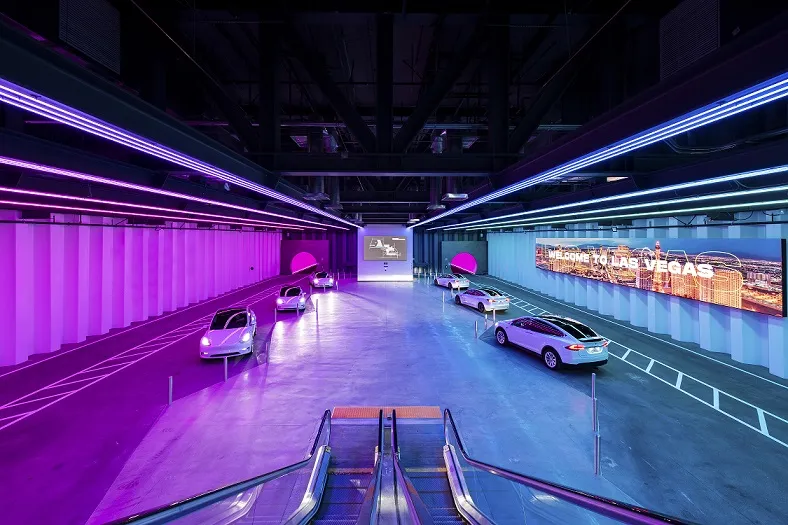Quebec-based tunnel lighting specialist Nyx Hemera has completed the installation of its tunnel lighting addressable control system (TLACS) in the Carlin Tunnel, Nevada, USA, claimed to be the first highway rated speed tunnel in North America to be fully lighted with LEDs.
Located in north-eastern Nevada and crossing over the Humbolt River, the quarter-mile long Carlin tunnel runs through an approximately US$31 million refurbishment project and includes enhanced roadway drainage, new concrete near tunne
June 11, 2014
Read time: 2 mins
Quebec-based tunnel lighting specialist 7797 Nyx Hemera Technologies has completed the installation of its tunnel lighting addressable control system (TLACS) in the Carlin Tunnel, Nevada, USA, claimed to be the first highway rated speed tunnel in North America to be fully lighted with LEDs.
Located in north-eastern Nevada and crossing over the Humbolt River, the quarter-mile long Carlin tunnel runs through an approximately US$31 million refurbishment project and includes enhanced roadway drainage, new concrete near tunnel entrances and new lighting system.
Designed with P.K. Electrical for the Nevada Department of Transportation (NDOT), the new lighting system includes LED luminaires, which are specifically designed for tunnel applications, and the TLACS, a sophisticated lighting control system employing dynamic dimming that responds to ambient light levels on both the inside and outside of the tunnels.
The eastbound bore was completed in December 2013; the westbound bore will be finalised in November 2014.
According to Nyx Hemera president and chief executive officer, Pierre Longtin, when LED lighting is used in road tunnels, an adapted and robust intelligent control system is necessary to be able to get the most out of the benefits offered by LEDs. “The TLACS’ exceptional increases in energy savings, safety and equipment lifetime will allow NDOT to reduce their operational costs, by approximately half, during a 20-year lifecycle. This entails dramatic savings over other conventional systems,” he says.
Karen D. Purcell, principal at P.K. Electrical, said, “The TLACS plays a vital role amongst all the innovative solutions used in the design of the tunnel lighting system. The tunnel will use a lighting control system with the latest technologies that will not only enhance energy consumption and security but also improve operational management.”
Located in north-eastern Nevada and crossing over the Humbolt River, the quarter-mile long Carlin tunnel runs through an approximately US$31 million refurbishment project and includes enhanced roadway drainage, new concrete near tunnel entrances and new lighting system.
Designed with P.K. Electrical for the Nevada Department of Transportation (NDOT), the new lighting system includes LED luminaires, which are specifically designed for tunnel applications, and the TLACS, a sophisticated lighting control system employing dynamic dimming that responds to ambient light levels on both the inside and outside of the tunnels.
The eastbound bore was completed in December 2013; the westbound bore will be finalised in November 2014.
According to Nyx Hemera president and chief executive officer, Pierre Longtin, when LED lighting is used in road tunnels, an adapted and robust intelligent control system is necessary to be able to get the most out of the benefits offered by LEDs. “The TLACS’ exceptional increases in energy savings, safety and equipment lifetime will allow NDOT to reduce their operational costs, by approximately half, during a 20-year lifecycle. This entails dramatic savings over other conventional systems,” he says.
Karen D. Purcell, principal at P.K. Electrical, said, “The TLACS plays a vital role amongst all the innovative solutions used in the design of the tunnel lighting system. The tunnel will use a lighting control system with the latest technologies that will not only enhance energy consumption and security but also improve operational management.”









